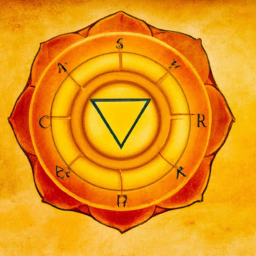?

Sacral dimple, also known as a sacral pit or sacral dimple, is a small indentation located at the base of the spine. It is a common occurrence, with around 3-8% of newborns being born with it. You may have noticed this in your child or yourself and wondered if it will go away. In this article, we will provide you with all the information you need to know about sacral dimple and whether it will eventually disappear or not.
What Causes Sacral Dimple?
The exact cause of sacral dimple is not known. However, it is believed to be a congenital disorder, meaning it is present at birth. Some studies suggest that it could be a result of improper fusion of the spine during fetal development. It can also occur if the skin around the base of the spine does not fully close before birth.
Will It Go Away on Its Own?
The answer is, it depends. In most cases, sacral dimple is harmless and does not require any treatment. It may remain the same size or even get smaller as the child grows. In some cases, it may disappear completely as the child’s skin and muscles develop. However, if the dimple is deep, large, or accompanied by a nearby tuft of hair, it may indicate an underlying spinal abnormality. In such cases, seeking medical advice is necessary.
When to Consult a Doctor?
As mentioned earlier, most sacral dimples are harmless and do not require any treatment. However, it is essential to monitor it and consult a doctor if you notice any of the following signs or symptoms:
- Redness, swelling, or discharge from the dimple
- Presence of hair or birthmarks near the dimple
- Persistent drainage or foul smell from the dimple
- Difficulty in bowel or bladder control
- Presence of a visible lump or bump beneath the dimple
These symptoms could indicate an underlying spinal issue, such as tethered cord syndrome or spinal dysraphism, which require medical attention.
How Is Sacral Dimple Diagnosed?
In most cases, a sacral dimple can be diagnosed through a simple physical examination. However, to rule out any underlying spinal condition, your doctor may recommend imaging tests, such as an ultrasound or MRI. They may also perform a neurological exam to check for any issues with nerve function.
Treatment Options for Severe Cases
If your child’s sacral dimple is associated with other symptoms or is more severe, your doctor may recommend further treatment. This may include surgical removal of the dimple, especially if it is causing frequent infections or abscesses. In cases where a spinal abnormality is present, your child may require surgery or other forms of treatment to address the issue.
In Conclusion
Sacral dimple is a common condition and often resolves on its own or remains harmless. However, it is always crucial to monitor it and consult a doctor if you notice any concerning symptoms. By doing so, you can ensure that your child receives the necessary treatment, if needed, and you can have peace of mind. Remember, every child is unique, and each case of sacral dimple is different. So, trust your instincts and always consult a healthcare professional for proper diagnosis and treatment.
“A dimple on the skin, a smile on the face, a lifetime of love in the heart.”
– Unknown





Yes, sacral dimples typically do go away over time. #SacralDimples
DawnGarcia: That’s good to know! #Careforkids
If you’re concerned, reach out to your doctor to get help. #healthcare
#PeaceofMind – Knowing that sacral dimples often fade over time can provide parents some comfort and assurance that their child’s health is in good hands.